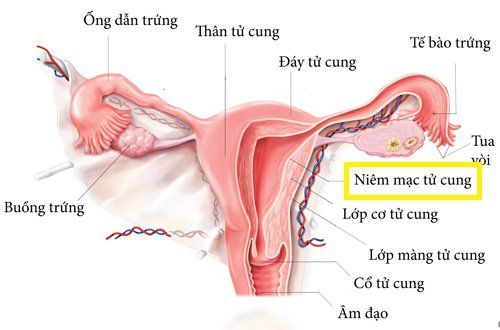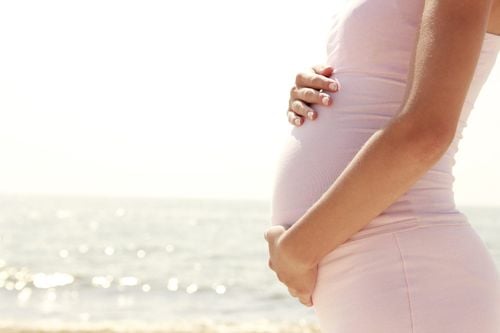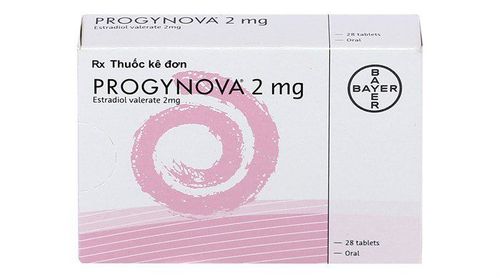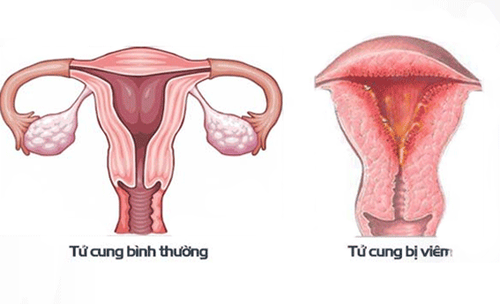The development of the endometrium is essential for successful conception and a woman's capacity to carry a pregnancy. An endometrium that is either too thick or too thin can contribute to subfertility and female infertility.
1. What is the endometrium?
The endometrium, or uterine lining, is the tissue lining the inner wall of the uterus in women, consisting of two layers:
- The basal layer: Composed of glandular and stromal cells, it is minimally affected by the menstrual cycle.
- The functional layer: This layer is influenced by changes during the menstrual cycle.
Monthly, the endometrium thickens under the influence of female sex hormones, preparing for implantation if an egg is fertilized (pregnancy). If fertilization does not occur, the endometrium sheds, causing vaginal bleeding, known as menstruation. Afterward, cells in the basal layer begin to grow, forming a new endometrial lining in the next menstrual cycle.
If a fertilized egg implants in the uterus, pregnancy hormones will cause the endometrium to thicken further and change its structure to support the development of the embryo and placenta. Therefore, abnormal endometrial thickness can affect the fertilization process and the ability to carry a pregnancy.

2. What is a normal endometrial thickness?
Endometrial thickness undergoes predictable changes corresponding to the different phases of the female menstrual cycle:
- Post-menstrual phase: Following menstruation, the endometrium reaches its thinnest state due to the shedding of the functional layer during the preceding menstrual period. At this point, the endometrial thickness measures approximately 3-4 mm, which is sufficient to cover the entire uterine cavity.
- Mid-cycle (approximately 14 days before menstruation): During this period, the endometrium is subject to the combined effects of estrogen and progesterone, leading to rapid thickening and the secretion of mucus. The endometrial thickness typically ranges from 8-12 mm, representing the optimal endometrial receptivity for successful fertilization and implantation.
- Pre-menstrual phase: In the pre-menstrual phase, the endometrium may attain a thickness of 12-16 mm. If fertilization and subsequent implantation do not occur, the functional layer of the endometrium undergoes shedding, resulting in menstrual bleeding.
3. The impact of the endometrium on pregnancy
3.1. Thin endometrium
A thin endometrium causes menstrual problems, such as prolonged cycles and light periods, affecting female fertility. In women with an endometrium thinner than 8mm, it hinders embryo implantation after fertilization. Even if implantation occurs, the embryo is easily dislodged, leading to pregnancy loss.
3.2. Thick endometrium
A thick endometrium, also known as endometrial hyperplasia, is caused by excessive estrogen levels and is diagnosed when the endometrial thickness exceeds 20mm. This hinders pregnancy due to hormonal imbalance, leading to prolonged bleeding, secondary amenorrhea, and a non-regressing corpus luteum that continues to produce hormones, causing further endometrial thickening and preventing shedding.
Additionally, a thick endometrium can indicate underlying conditions like polycystic ovary syndrome (PCOS), ovulation disorders,...delaying conception.
Endometrial abnormalities can only be detected through ultrasound. Therefore, women of reproductive age should have regular gynecological check-ups for early detection and timely intervention to minimize the impact on fertility.
4. What endometrial thickness is considered optimal for pregnancy?

Endometrial thickness plays a vital role in conception and fetal development. Generally, an endometrial thickness of 8-10 mm is considered the optimal size for conception in women.
This thickness provides an optimal environment for the implantation and development of a fertilized ovum into a healthy fetus. If, after menstruation, the endometrial thickness is between 8-14 mm, it is a positive sign indicating a good chance of successful conception. Endometrial thickness measured on day 12 of the cycle before the luteal phase, within the range of 7-14 mm, shows the highest and most consistent pregnancy rate; outside this range, the rate gradually decreases.
Vinmec International General Hospital offers gynecological examination and screening packages to help women detect early gynecological infections and cancers (cervical cancer), including endometrial abnormalities. Vinmec has a team of leading obstetricians and gynecologists, modern medical equipment, and professional service quality to ensure customer satisfaction during their visits.
To arrange an appointment, please call HOTLINE or make your reservation directly HERE. You may also download the MyVinmec app to schedule appointments faster and manage your reservations more conveniently.








